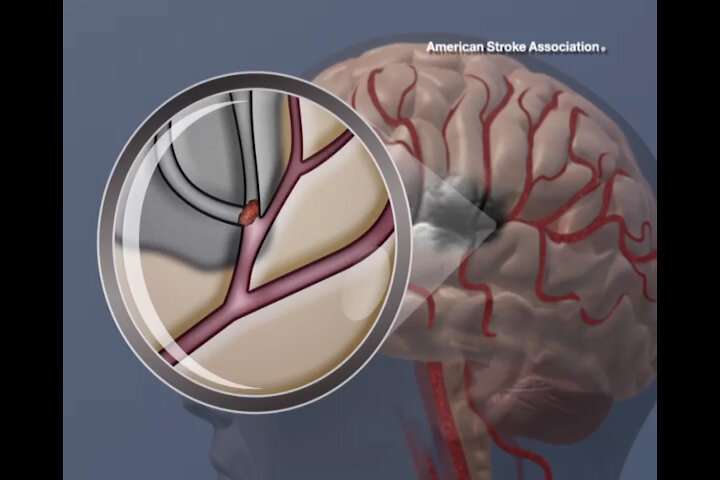Target: Stroke program demonstrates substantially improved outcomes in adherence to guidelines

Hospitals implementing the American Heart Association/American Stroke Association Target: Stroke Phase II strategies decreased the median door-to-needle time from 66 minutes to 51 minutes, according to a study presented today presented in Honolulu at the American Stroke Association's International Stroke Conference 2019, a world premier meeting for researchers and clinicians dedicated to the science and treatment of cerebrovascular disease.
The study, "Achieving More Rapid Door-to-Needle Times in Acute Ischemic Stroke," found there were substantial improvements in time to alteplase administration in Get with the Guidelines-Stroke hospitals after implementation of Target: Stroke Phase II and the program's national goals were achieved with clinical outcomes also being significantly improved.
Target: Stroke is a national quality improvement initiative focused on improving acute ischemic stroke care and outcomes by reducing door-to-needle (DTN) times for eligible patients treated with intravenous alteplase. The primary national goal of Target: Stroke Phase II was for hospitals to achieve door-to-needle times within 60 minutes for 75 percent or more of acute ischemic stroke patients treated with intravenous alteplase, with a secondary goal of 45 minutes or less DTN in 50 percent or more of the same category of patients.
The researchers found when comparing all patients treated in Phase I with Phase II, the median DTN time decreased from 66 minutes to 51 minutes and the percentage of patients with DTN times less than or equal to 60 minutes increased from 42 percent to 67 percent.
"It is a common saying in the stroke community – 'time is brain' - but it is entirely true," said Gregg C. Fonarow M.D. Director of the Ahmanson-UCLA Cardiomyopathy Center, co-chief of UCLA's Division of Cardiology and Professor of Cardiovascular Medicine, UCLA, Los Angeles California, lead author of the study and volunteer expert for the American Heart Association. "Every minute a stroke goes untreated a typical patient loses 1.9 million neurons – so a faster response time is critical to improved patient outcomes."
Introducing Target: Stroke Phase III
Alongside the research surrounding the program's recent success in Phase II, the American Heart Association/American Stroke Association is announcing Phase III of its Target: Stroke program.
"Phase III of this American Heart Association/American Stroke Association initiative further raises the bar by setting more aggressive targets for timely treatment with IV alteplase, "said Fonarow. "But now the aim goes beyond faster door-to-needle times. Phase III introduces a second type of intervention into the mix, setting the first-ever targets for prompt treatment with endovascular therapy."
Target: Stroke Phase III aims to continue to improve on DTN times, as well as introduce goals for door-to-device times for endovascular therapy devices. The primary goals of Phase III are achieving DTN times within 60 minutes for 85 percent or more of acute ischemic stroke patients treated with IV thrombolytics – with secondary goals of getting down to 45- and 30-minute timelines as well.
"We see these goals as aggressive – but also completely attainable – and more importantly we believe that it will continue to improve outcomes and save the lives of additional acute ischemic stroke patients. At the end of the day – that is everyone's goal," added Fonarow.
The Target: Stroke program helps hospitals identify best practice strategies, utilize clinical decision tools, and guidelines for patient care. Research analyzing data from this program supports the conclusion that quality improvement measures from Target: Stroke result in substantial improvement in patient care and outcomes.
There are more than 1,200 Target: Stroke hospitals across the United States.

















